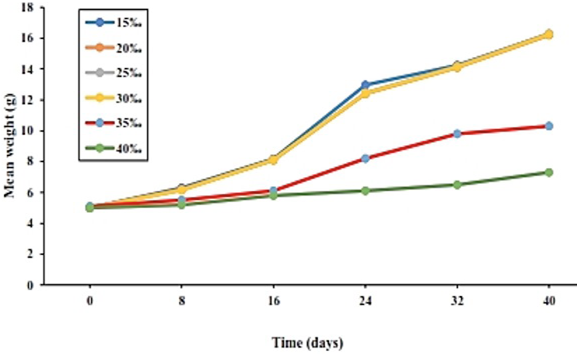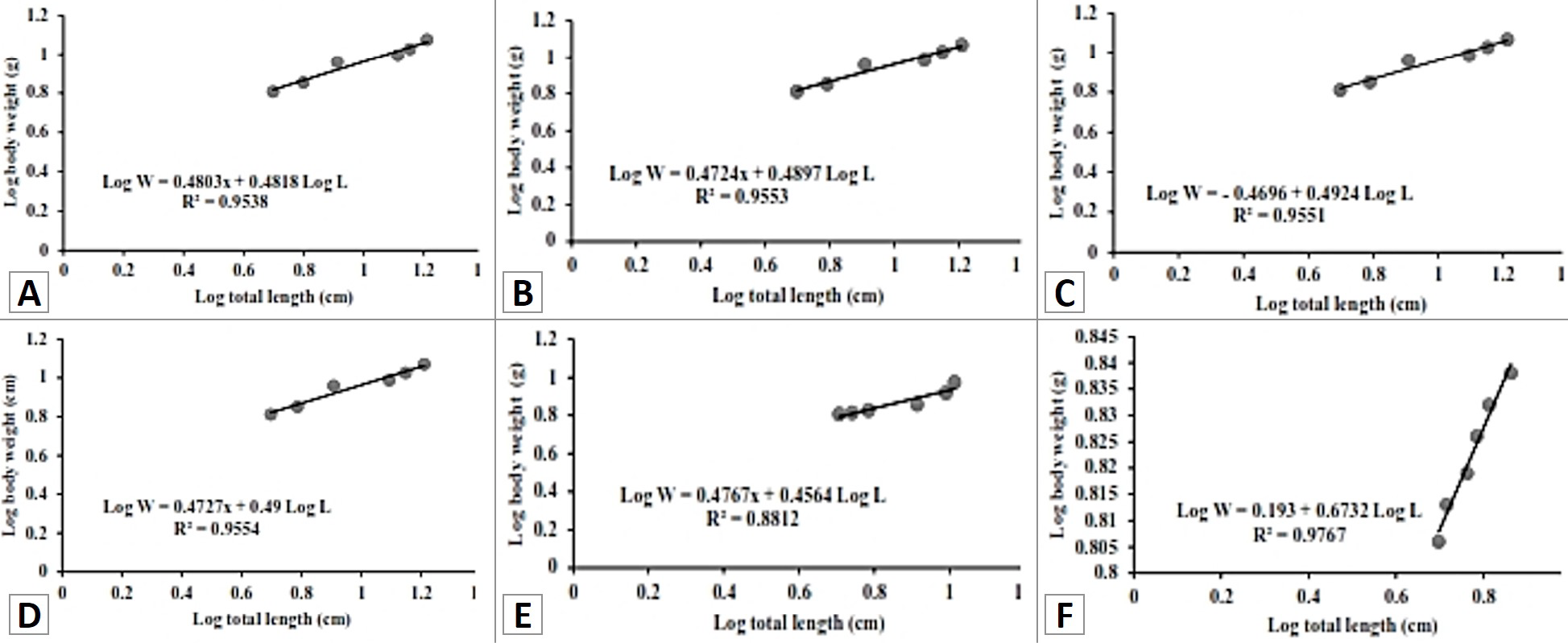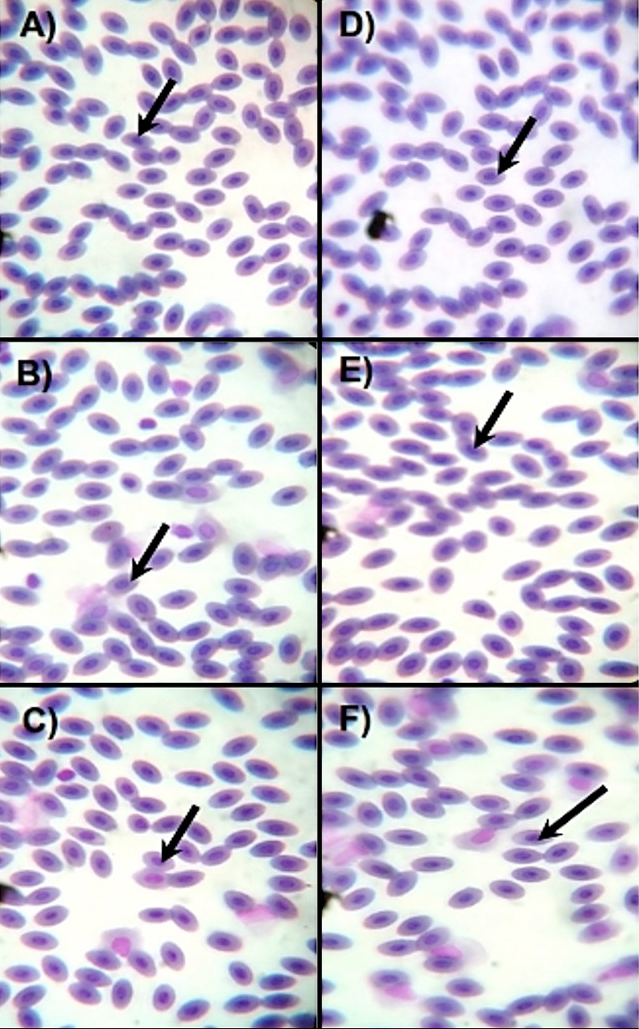Impact of Different Salinity Levels on Growing Performance, Food Conversion and Meat Quality of Red Tilapia (Oreochromis sp.) Reared in Seawater Tanks
Impact of Different Salinity Levels on Growing Performance, Food Conversion and Meat Quality of Red Tilapia (Oreochromis sp.) Reared in Seawater Tanks
Abdul Malik1,2, Ghulam Abbas1,*, Abdul Ghaffar3, Sara Ferrando4 and Lorenzo Gallus4
Relationship between mean fish weight and time for fish reared at different salinity level.
Length-weight relationship of red tilapia fingerlings Oreochromis sp. reared on different salinity levels (A, 15‰; B, 20‰; C, 25‰; D, 30‰; E, 35‰; F, 40‰).
Blood smear of red tilapia fingerlings Oreochromis sp. reared on different salinity levels (A, 15‰; B, 20‰; C, 25‰; D, 30‰; E, 35‰; F, 40‰). Arrow, micronucleus (Giemsa stained: 1000X).



















